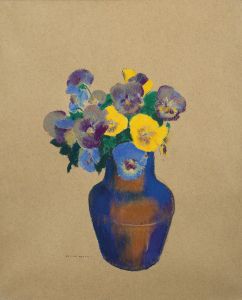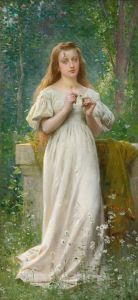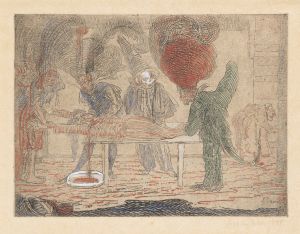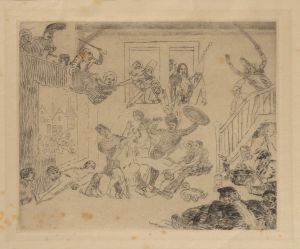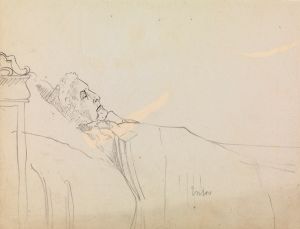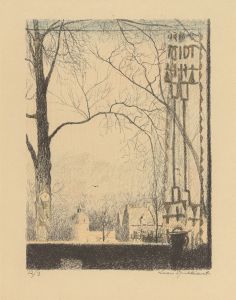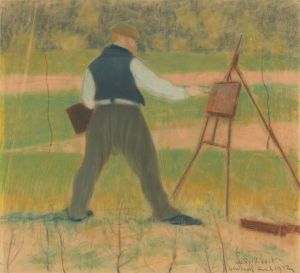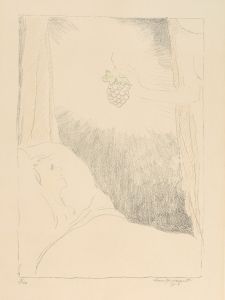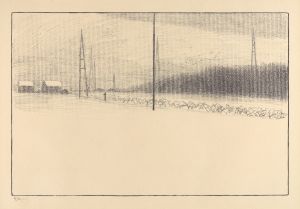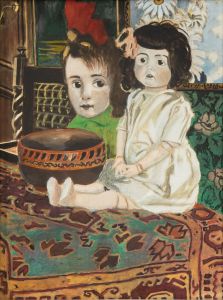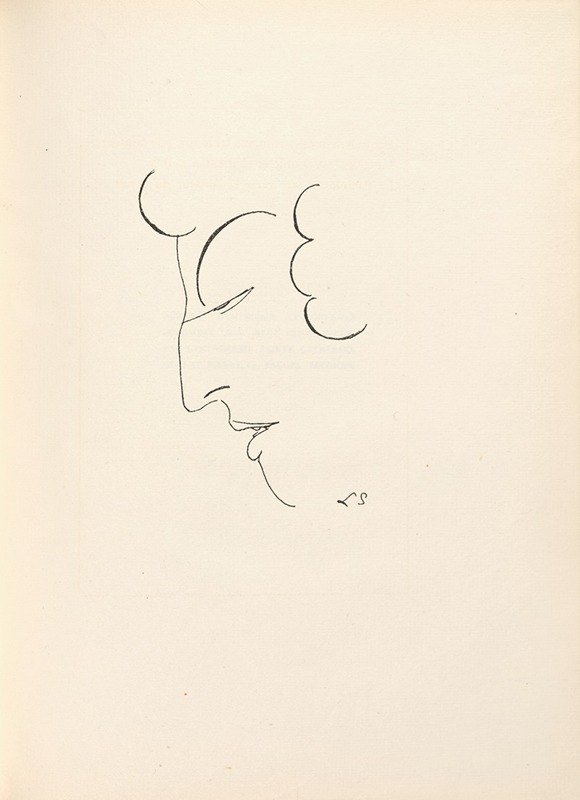
La Femme au Prisme
A hand-painted replica of Léon Spilliaert’s masterpiece La Femme au Prisme, meticulously crafted by professional artists to capture the true essence of the original. Each piece is created with museum-quality canvas and rare mineral pigments, carefully painted by experienced artists with delicate brushstrokes and rich, layered colors to perfectly recreate the texture of the original artwork. Unlike machine-printed reproductions, this hand-painted version brings the painting to life, infused with the artist’s emotions and skill in every stroke. Whether for personal collection or home decoration, it instantly elevates the artistic atmosphere of any space.
Léon Spilliaert (1881-1946) was a Belgian symbolist painter and graphic artist known for his mysterious and often melancholic works. One of his notable pieces is "La Femme au Prisme" (The Woman with the Prism), created in 1907. This painting is a prime example of Spilliaert's unique style, which blends elements of symbolism and expressionism.
"La Femme au Prisme" depicts a solitary woman gazing into a prism, which refracts light into a spectrum of colors. The composition is characterized by its stark contrasts and the use of light and shadow to create a sense of depth and introspection. The woman's face is illuminated by the refracted light, giving her an ethereal and almost ghostly appearance. This use of light is a hallmark of Spilliaert's work, reflecting his fascination with the interplay between light and darkness.
The painting is rendered in a limited color palette, predominantly using shades of black, white, and gray, with the prism introducing a subtle yet striking array of colors. This restrained use of color enhances the overall mood of the piece, emphasizing the introspective and contemplative nature of the subject. The background is minimalistic, drawing the viewer's attention to the woman and the prism, and creating a sense of isolation and focus.
Spilliaert's work often explores themes of solitude, introspection, and the human condition, and "La Femme au Prisme" is no exception. The woman's contemplative gaze into the prism suggests a search for deeper understanding or insight, a common motif in Spilliaert's oeuvre. The prism itself can be interpreted as a symbol of clarity and revelation, as it transforms ordinary light into a spectrum of colors, revealing hidden complexities.
Léon Spilliaert was largely self-taught, and his work was influenced by a variety of sources, including literature, philosophy, and the natural world. He was particularly inspired by the writings of Edgar Allan Poe and the symbolist poetry of Maurice Maeterlinck. These influences are evident in the dreamlike and often eerie quality of his paintings.
During his lifetime, Spilliaert's work was not widely recognized outside of Belgium, but he has since gained international acclaim for his distinctive style and the emotional depth of his paintings. "La Femme au Prisme" is housed in the Royal Museum of Fine Arts in Brussels, where it continues to captivate viewers with its haunting beauty and enigmatic subject matter.
In summary, "La Femme au Prisme" by Léon Spilliaert is a compelling example of the artist's ability to convey complex emotions and themes through his masterful use of light, shadow, and composition. The painting remains an important work in the canon of early 20th-century European art, reflecting Spilliaert's unique vision and his contribution to the symbolist movement.





